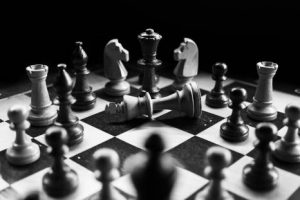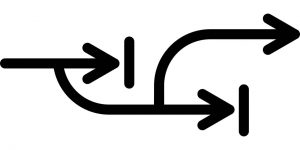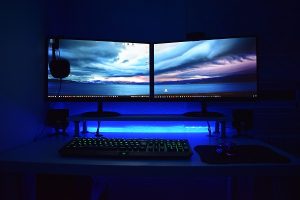"The bridge between knowledge and skill is practice. The bridge between skill and Mastery is time"
- Jim Bouchard
Introduction
R6 Siege - Skills
Table of Content
Map knowledge

I believe that map knowledge is the biggest challenge new players will encounter in this game.
Rainbow Six Siege has been out for few years and most of DLC seasons brought new maps to the pool, which only broadens the gap between new players who try to jump into game and old-timers who know every corner of older maps.
WHAT MAP KNOWLEDGE MEANS?
- map’s layout
- objective sites locations
- routes to certain areas.
- call-outs without a need to check compass
- walls and hatches that have to be reinforced/destroyed
- commonly used routes and angles
- spawn peek locations
- create your angles and ambushes
- wall bang without a mark
- pre-fire common spots
HOW TO LEARN MAPS?
- Terrorist HuntPlayers can choose maps for TH in options->matchmaking preferences.T-hunt is a good option for general practice and warm-up in Rainbow Six Siege.From maps perspective, it can help you with understanding basic map layout.On the other hand, TH is not a useful mode for learning objectives and commonly used routes.
- Custom gameFully customizable mode, usable by both new players who want to learn maps basics. A useful tool for advanced map knowledge gain, as well.Great for learning basic map layout as you can traverse the map without any drawbacks.Useful for playing around with maps and utility to figure new tactics and angles.
STRATEGIES

Aim

CROSSHAIR PLACEMENT
What does crosshair placement mean?
Why is crosshair placement prominent?
Where should you place crosshair?
What is a common mistake?
How to get better at crosshair placement?
RECOIL CONTROL
What does recoil control mean?
Why is recoil control important?
What is a common mistake?
How can you improve recoil control?
TRACKING
What does tracking mean?
Why is tracking important?
What is a common mistake?
How can you improve tracking?
KEEP CALM BUT REMAIN CONFIDENT
Please do not mistake the above with being reckless.
Game sense

HOW DO YOU LEARN GAME SENSE?
Comprehending inputs
Throughout the round, you will get different environmental signals which need to be first noticed, then understood and finally acted upon.
In Rainbow Six Siege, those signals can be visual (bullet trail, environmental holes, pings), audio (footsteps, gunshots, explosions, operator’s actions), or communication-related (callouts).
At the beginning of a relationship with any game, you will find it difficult to process all of those inputs at the same time. It is natural, so don’t be too harsh on yourself.
Over time you will learn to recognize individual cues and predict the effect. To accelerate this process, focus from the beginning on:
– Data at your disposal
– What did this data mean
– What could have been done differently
Understanding mechanics, dynamics and tactics
Allow me to describe my understanding of each component.
Mechanics are a set of rules designed by game creators. It is a list of what you can and cannot do due to technical restrictions put on players in the game. Such limits can be knowing which surfaces can be destroyed or how to “cook” frag grenade.
Dynamics are behaviors that emerge from mechanics put into use. Examples here could be shooting the enemy through the penetrable wall or using cooking grenade and trajectory to kill the opponent without giving them a chance to run away.
Tactics are standard sets of behaviors performed by players when mechanics combine with dynamics.
As you start your experience with Rainbow Six Siege, all of the components can be confusing. This is especially true if you bring habits formed in other FPS games where mechanics and dynamics of the game are different.
I would advise new players to focus on learning the first mechanics and dynamics present in Siege. They will be the base for gaining a more profound understanding of tactics, as well as players tendencies.Your growth in mechanics and dynamics at the beginning will be rapid. As time passes, the amount of mechanics and dynamics you learn will probably slow down. That’s the time I would suggest to shift focus on analyzing common tactics and tendencies for specific situations.
What happens when you understand all of the above aspects?
- aggressive vs. passive playstyle balance
- playing objective vs. going for kills
- predicting the enemy’s moves
- creativity
- clutch capability
- utility effectiveness
- consistency
Peeking

COMMON MISTAKES?
HOW TO PEEK
Peeking slowly should be used only if you want to conceal your presence and sneak on enemies.
Peeking fast means attempting to have a glance at the angle from behind the cover as quickly as possible. Less time spent exposing yourself to enemies results in less time given to your enemy to shoot you.
PURPOSE OF PEEKING
Peeking in Rainbow Six Siege serves two primary purposes: gathering intel and getting a kill.
Pick as quickly and narrow as possible
As mentioned above, try to give your enemy as little time possible to shot you while exposing the least of your hitboxes.
Don’t re-peek pre-fired spots
Players frequently commit this mistake to peek an angle when an enemy is continuously shooting at your previous peek position. Instead of immediately re-peeking the same spot, either adjust your peek or peek once they stop shooting.
Change head level for re-peeks
This way, you increase uncertainty and need for adjustment (thus time) of the enemy’s crosshair placement, giving yourself an advantage, as well as the element of surprise.
Re-peek at random time intervals
The enemy will have a harder time guessing when will you peek again if you do not continue to peek at the same time intervals.
Farther from cover = better
Peeking while “hugging” the wall results in exposing your body to the enemy more than otherwise. This is due to camera placement in the middle of the body. Whenever possible try to peek farther from the corner
Holding angles

COMMON MISTAKES?
HOW TO HOLD ANGLES
Main rules for holding good angles:
Angle held is uncommon and inconspicuous
Just like in every other aspect of Rainbow Six Siege creativity and the surprising enemy are both great tools increasing your odds of winning around.
Try not to hold commonly used angles to avoid being pre-fired.Concealing body as much as possible
Make sure the body of the operator is as hidden behind obstacles as feasible.
Least body parts exposed results in higher protection and an increased chance of surviving a gunfight.Not exposed to multiple other angles that you are not controlling
Knowing which angle to hold safely and where enemies can hit you from comes with experience and map knowledge. If you are a new player to Rainbow Six Siege, do not be harsh on yourself and try to watch where the enemy killed you from. This way, you can learn and prevent recurrence of the same situation in the future.
You generally do not want to expose your back to external windows/doors, nor objective entrances that are not covered by any teammate.The enemy has to turn the corner
Applies mainly to holding an angle on door, hallway, or window.
The advantage arises due to the enemy having to identify your location and to take time to adjust the aim. Meanwhile, you know exactly where the enemy is and have little need for crosshair adjustment.Example: instead of holding angle by standing in front of the window, stay on the side so that the enemy has to turn after vaulting. Increases difficulty of hitting you and time needed to do so, giving you an advantage.
- Angle held is “tight.”
Ideally, you want to hold an angle where the enemy has to put the head into your pre-placed crosshair to see you at all.
Movement
Movement in Rainbow Six Siege plays a considerable part when it comes to winning gunfights, as well as surprising your enemy.

COMMON MISTAKES?
I notice that players tend to make judgment mistakes when it comes to using correct movement type for the situation they are in.
No movement technique will suit all scenarios, its rather about mindset and making the right decisions.
HOW TO MOVE
Different surfaces differ in sound level
Fast walking on a carpet will make significantly less sound than the same action on a metal floor.- Utilize sound distractions
You can use gunfights or explosions, such as grenades or charges to mask sound made by your movement. This gives you the possibility to run faster without revealing your position to nearby enemies. Limit sprinting
You are vulnerable when sprinting as it takes time to aim down sight. You put yourself at a disadvantage if an enemy is already in ADS.
Additionally, sprinting can reveal your position.In summary: sprinting is only useful if you know an enemy is either not nearby or is distracted by action and sound.
crouch and slow walking
Both movement methods are great for surprising an enemy.
Slow walking can be achieved by either tilting minimally movement stick (consoles) or pressing/holding a walk button (PC).
Crouch+walk speed is the most silent way of moving in Rainbow Six Siege.
Best used when you attempt flank on unsuspecting enemies. In such a scenario, speed is a significantly less important factor than the element of surprise.- crawling sucks
Lying down is great for surprising your opponent and messing with their crosshair placement.
But what about crawling? Well, for some reason, crawling makes more noise than crouch walking. Do not crawl unless you want to avoid leaving footprints or its the best way to avoid getting shot.
Adaptability
- adjust to new conditions
- reshape and modify the environment to an unexpected situation and team’s needs

WHY IS IT IMPORTANT?
HOW TO BE ADAPTABLE
What are the common mistakes?
- Sticking to original plan too muchDo not get overly attached to your strategies. The best way to describe it is to have reliable and well thought out tactics but held loosely.
- Lack of empathyNow, I do not mean that you should cry every time an enemy dies, thinking about how bad it hurt them.Empathy in the sense of adaptability for Siege is to put yourself into your enemy’s position. By doing so, you can anticipate the enemy’s moves.
- Acting in a predictable wayDo not go for the most obvious choice. Unless of course, it is your only option.
- Rushing actionsIt can be hard in the heat of the battle, but try to pause for a moment to consider all your options before deciding on your next move.
INTEL

- Sound cues
- Visual information
- Verbal communication between teammates
- Droning
- Default cameras
- Intel gathering tools on both defense and offense
- Unique abilities designed for this purpose
INTEL GATHERING
Don’t let the enemy know that you know
- PingingPinging means spotting opponents with your intel-gathering tool, which provides them with visual information that they have been detected.As a result, the enemy is notified about his location being known to opponents, which will likely result in: searching for intel tool, relocating & cautiousness.All of which will render intel gathered either useless or less valuable.How to avoid it?Simple – don’t ping. Use voice chat and call the enemy’s position out, instead.
- Plain droningIf you see an enemy located in a specific area, you do not have to go farther from that point. Way too often players feel a need to get closer with a drone or check the further situation. Sometimes it is an excellent course of action. It lets you inspect the entire objective site or see if the located defender is backed up by other teammates or by any utility.However, most of the time, you will let opponents see your drone, shoot it, and relocate.How to improve it?Try to be as sneaky as possible and prioritize remaining undiscovered over clear visuals or the possibility to ping.
Conceal your intel-gathering tools
Camouflaging intel tools is mainly applicable to Valkyrie, Echo and all drones (including Mozzie on defense and Twitch on attack).
Try to place your tools in hard to spot and unusual locations.
The drone placed in the middle of the room on the floor is straightforward to spot. The same drone located under bed exposed by a sliver line of sight will be significantly harder to find by enemies.
Knowing where enemies aren’t can be just as valuable
- early roundIf you are an anchor on defense, you can hop on external cameras to see where enemies are coming from.Do not rely only on those default cams that remain available. Destroyed cameras are an excellent indication of where attackers are coming from.
- late-roundLet’s assume a scenario where you have intel on one of the bomb sites during the last few seconds of the round.Knowing that enemies are not pushing that site gives you clear information that they are pushing the other one.Let your alive teammates know about it.
Use sound
UTILIZING INTEL
- what is the intel
- what are your position and role
- what is the current round situation


